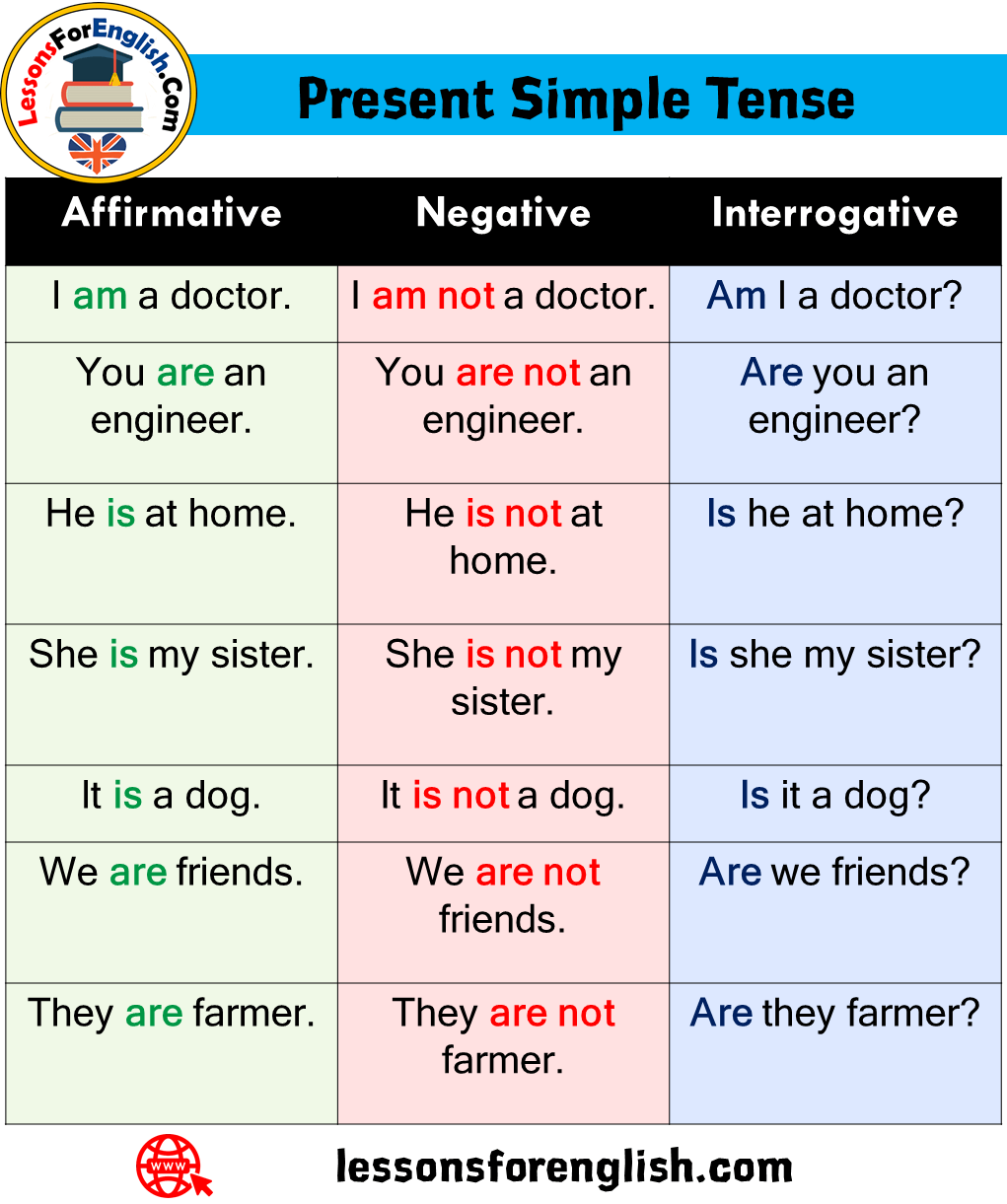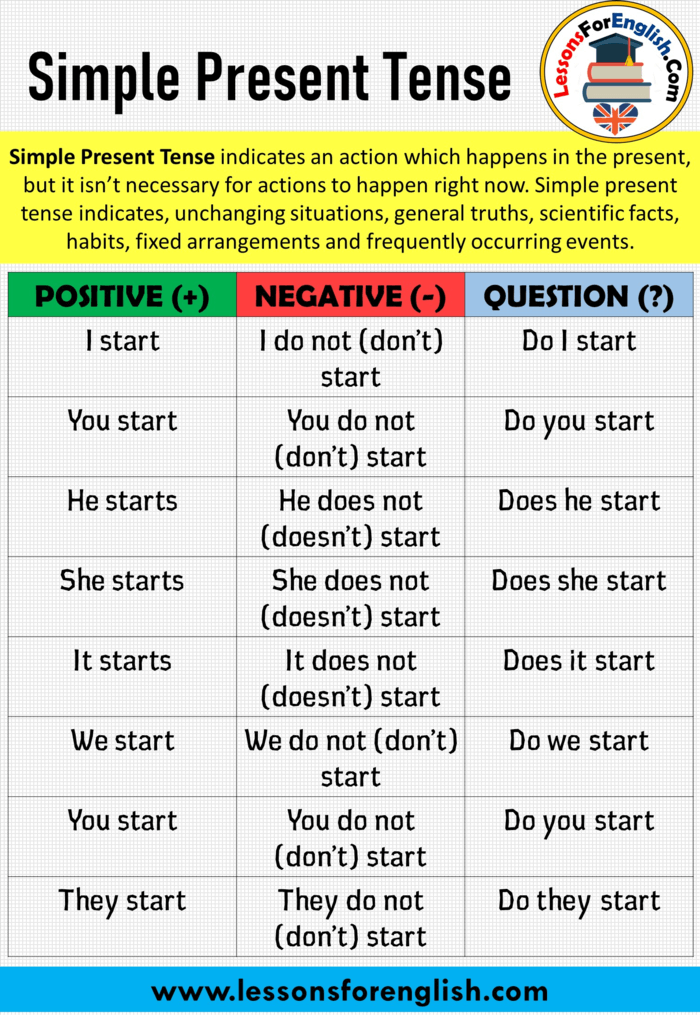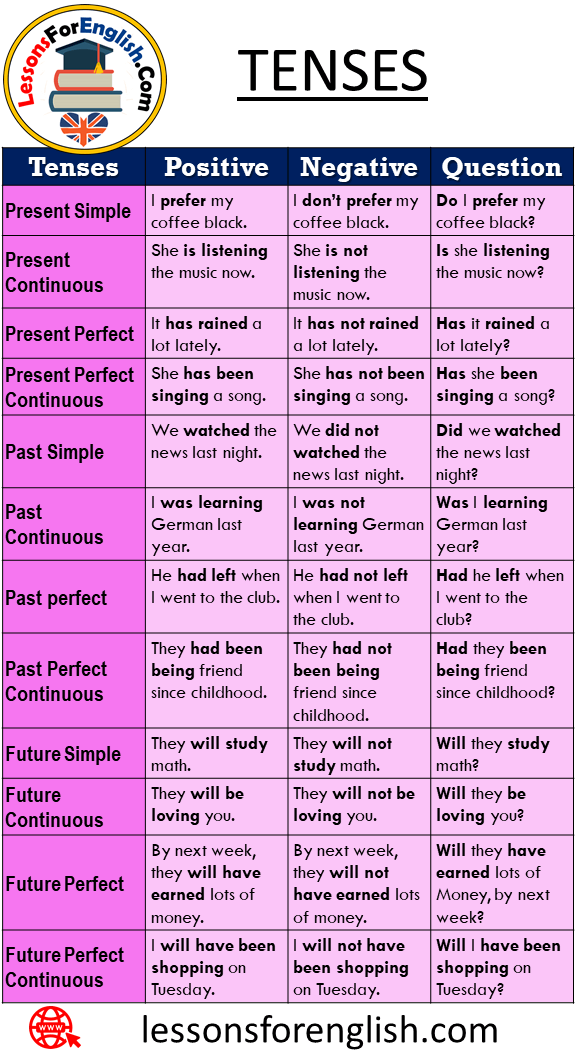Simple Present Tenses Definition and 20 Example Sentences

Table of Contents
Simple Present Tenses
‘Simple Present Tenses’, which we will examine in this course, is one of the most important topics in English. He says a job is always done. If a job is expressed as if it is always done, that sentence is a Simple Present Tense sentence. It is also mentioned by the name Present Simple Tense in some English grammar books.
Use Of Simple Present Tenses
It is used when describing facts known to everyone, planned actions, repeated actions over a certain period, constant situations, feelings, and desires. It is used when describing constantly repeated actions. For example;
- You drink three cups of tea every night.
- Tom goes to the cinema once a month.
The unchanging state is used to express feelings and desires. For example;
- Melissa works in New York
- You like a pen.
It is used when describing planned actions. For example;
- Bilica takes an exam in May.
Note: Simple Present Tense is also used when telling the facts known to everyone and giving instructions or directions. It is also used when describing pre-programmed events. In this type of usage, sentences are expressed according to Broad time rules, even if they have future tense meaning.
Simple Present Tenses Positive Sentences
Simple Present Tense is used in a positive sentence, while the English formula is quite simple. The only rule to note here is that in the third person singular, the verb takes the octet ‘-s ‘ according to its structure.
- Subject + Verb (he / she / it-s) + Object
Examples:
- John work at home.
- My mother gets up late.
- My sister goes to school every night.
Simple Present Tenses Negative Sentences
The auxiliary verb ‘do’ is used as ‘does’ in the third singular, taking the octet ‘- es’. In English octave sentences, the main verb must be infinitive, since the auxiliary verb receives the suffix ‘-s’.
- Subject + do/does + not + Verb + Object
Examples:
- Homany doesn’t like basketball.
- They don’t speak English.
- You don’t drink tea.
Questions Sentences
Simple Present Tense auxiliary verb’ do ” is used as ‘does’ in the third singular, taking the octave ‘- es’. In English octopus sentences, the main verb must be infinitive, since the auxiliary verb receives the suffix ‘-s’.
- Do/Does + Subject + Verb + Object
Examples:
- Do you like exam?
- Do you play basketball?
Tip: When a positive sentence structure is desired with Simple Present Tense, the verbs ‘do’ ‘does’ can only take their place as the main structure of the sentence. But there is an exceptional case. This exceptional case depends on whether the person who wants to establish the sentence will make an emphasis. If it is desirable to draw attention to a point in positive sentences, that is, if it is desirable to emphasize it in this sentence, the verbs ‘do’ and ‘does’ are used as an auxiliary to ensure this. We can put the auxiliary verb “do or does” on the immediate left side of the main verb in our sentence, according to our subject.
There is a small point to consider when doing this process. 3 in broad-time sentences. we have learned above that when singular persons are in the subject position, we must bring to the end of our verb one of the inflection suffixes “-s,- es,- ies” in accordance with the rule. But 3.we do not need to make any shots to the main verb of the sentence, since the auxiliary verb “does” is already inflected in stressed sentences, one of which is the subject of the singular person. By these rules, we make a structural emphasis on the broad-Time sentence that we create. Although it has a simple establishment, this structure is not much preferred in daily life uses.


